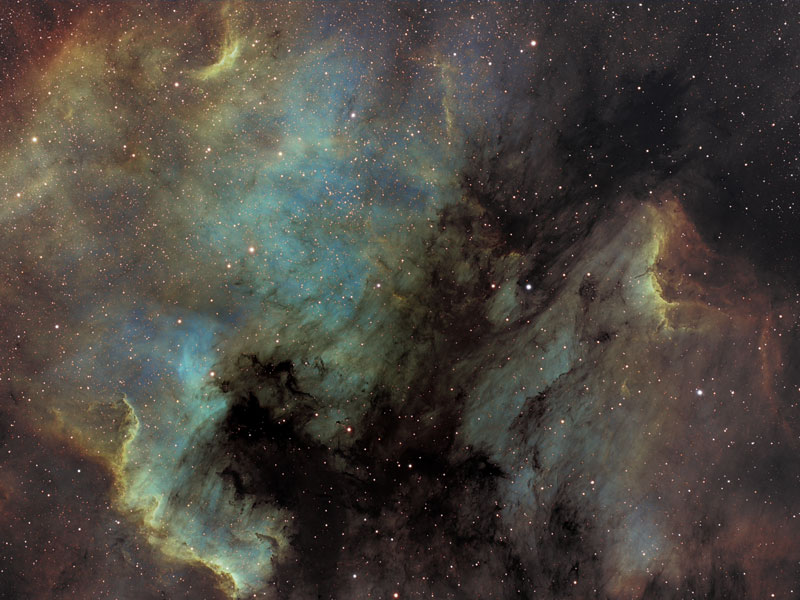
|
Credit & Copyright: Nicolas Outters
(Observatoire d'Orange)
Explanation:
Here are some familiar shapes in unfamiliar locations.
This
emission nebula on the left
is famous partly because it resembles Earth's continent of North America.
To the right of the
North America Nebula, cataloged as
NGC 7000, is a less luminous nebula that resembles a
pelican dubbed the
Pelican Nebula.
The two emission
nebula measure about 50 light-years across,
are located about 1500
light-years away, and are separated by a
dark absorption cloud.
This spectacular image captures, in false color, the nebulas, bright
ionization fronts, and fine details of the dark dust.
The nebulae can be seen with binoculars from a dark location.
Look for a
small nebular patch
north-east of bright star
Deneb in the constellation of Cygnus.
It is still unknown which star or stars
ionize the red-glowing
hydrogen gas.
|
January February March April May June July August September October November December |
| ||||||||||||||||||||||||||||||||||||||||||||||||
NASA Web Site Statements, Warnings, and Disclaimers
NASA Official: Jay Norris. Specific rights apply.
A service of: LHEA at NASA / GSFC
& Michigan Tech. U.
Based on Astronomy Picture
Of the Day
Publications with keywords: North America Nebula - Pelican Nebula
Publications with words: North America Nebula - Pelican Nebula
See also:
- APOD: 2025 January 22 Á The North America Nebula
- APOD: 2023 August 7 Á The Pelican Nebula in Gas, Dust, and Stars
- Stars, Dust, Pillars, and Jets in the Pelican Nebula
- North America and the Pelican
- The Pelican Nebula in Red and Blue
- The Pelican Nebula in Gas, Dust, and Stars
- The North America Nebula in Infrared
